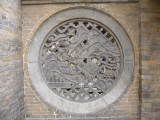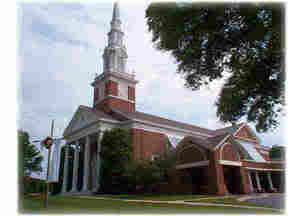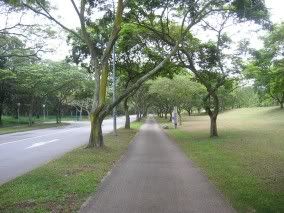beijing two
Ni hao.
We were in Beijing for thirteen days. Beijing is a city of fifteen million people, located at the edge of the North China Plain. It was a frontier trading town for the Mongols and Koreans, and was later the capital of the Yan Kingdom (5th century bc). It experienced a number of dynasties over the next fifteen hundred years It was razed by the Mongol warrior Genghis Khan in 1215 ad, who rebuilt the city with rings of walls, with the Drum Tower at the center. The Khan regime was succeeded by the Ming Dynasty (1368-1644); during this time the Forbidden City and the Temple of Heaven were built, and the Great Wall was rebuilt and extended. The basic plan of Beijing was established during this era and existed until the Communist-inspired Cultural Revolution (1966-) In the middle of the 17th century the Qing Dynasty began, as the Manchus penetrated the Great Wall and ruled for 250 years. In these years a number of foreign invaders wreaked havoc on the city.
The modern era begins in China in the early twentieth century. The nation is ruled by a federation of warlords and foreigners, and into this mix Mao rises to power. In 1949 the Communists come into power,as Mao addresses an audience of 500,000 in Tienamen Square. There ensues the destruction of temples, walls and monuments, and the influence of Soviet architecture becomes obvious. In 1966 the Cultural Revolution is launched: everything old is to be destroyed. From 1979 onward Beijing began to open itself to the outside world. Massive construction projects were initiated, often at the expense of the traditional hutongs, and the city began to embrace an interesting mix of communist and capitalist practices, which reflect its deep traditional culture and its openness to modernity.
Recent issues facing Beijing are preparations for hosting the 2008 Olympics, an emerging environmental crisis, the experience of overpopulation, the absorption and just treatment of migrant workers, and the desire for freedom in markets and social expression. For the United States, China is a critical partner in that we have purchased goods from them over the past years, and China has used these funds to purchase U.S. treasury bills. Approximately half of our $1.2 trillion debt is with China and Japan. In essense, these countries have funded the U.S. economy over the past six years, in particular the war in Iraq. This debt connects us with Asia in ways that will shape our relationship over well into this century.
Of course, China is important apart from its relationship to the U.S. It is an overwhelming place, rich in history, diverse in geography, blessed with intellectual capital and primed for world prominence in the 21st century. I will reflect on the mission of Christianity in China in a future blog. For more on Beijing and China, I recommend the following: The Lonely Planet Guidebooks for Beijing and China; Tom Friedman's The World is Flat; and Thunder From The East by Nicholas Kristof and Sheryl Wudunn.
Zaijian!
We were in Beijing for thirteen days. Beijing is a city of fifteen million people, located at the edge of the North China Plain. It was a frontier trading town for the Mongols and Koreans, and was later the capital of the Yan Kingdom (5th century bc). It experienced a number of dynasties over the next fifteen hundred years It was razed by the Mongol warrior Genghis Khan in 1215 ad, who rebuilt the city with rings of walls, with the Drum Tower at the center. The Khan regime was succeeded by the Ming Dynasty (1368-1644); during this time the Forbidden City and the Temple of Heaven were built, and the Great Wall was rebuilt and extended. The basic plan of Beijing was established during this era and existed until the Communist-inspired Cultural Revolution (1966-) In the middle of the 17th century the Qing Dynasty began, as the Manchus penetrated the Great Wall and ruled for 250 years. In these years a number of foreign invaders wreaked havoc on the city.
The modern era begins in China in the early twentieth century. The nation is ruled by a federation of warlords and foreigners, and into this mix Mao rises to power. In 1949 the Communists come into power,as Mao addresses an audience of 500,000 in Tienamen Square. There ensues the destruction of temples, walls and monuments, and the influence of Soviet architecture becomes obvious. In 1966 the Cultural Revolution is launched: everything old is to be destroyed. From 1979 onward Beijing began to open itself to the outside world. Massive construction projects were initiated, often at the expense of the traditional hutongs, and the city began to embrace an interesting mix of communist and capitalist practices, which reflect its deep traditional culture and its openness to modernity.
Recent issues facing Beijing are preparations for hosting the 2008 Olympics, an emerging environmental crisis, the experience of overpopulation, the absorption and just treatment of migrant workers, and the desire for freedom in markets and social expression. For the United States, China is a critical partner in that we have purchased goods from them over the past years, and China has used these funds to purchase U.S. treasury bills. Approximately half of our $1.2 trillion debt is with China and Japan. In essense, these countries have funded the U.S. economy over the past six years, in particular the war in Iraq. This debt connects us with Asia in ways that will shape our relationship over well into this century.
Of course, China is important apart from its relationship to the U.S. It is an overwhelming place, rich in history, diverse in geography, blessed with intellectual capital and primed for world prominence in the 21st century. I will reflect on the mission of Christianity in China in a future blog. For more on Beijing and China, I recommend the following: The Lonely Planet Guidebooks for Beijing and China; Tom Friedman's The World is Flat; and Thunder From The East by Nicholas Kristof and Sheryl Wudunn.
Zaijian!




 Carter's Roost
Carter's Roost




0 Comments:
Post a Comment
<< Home